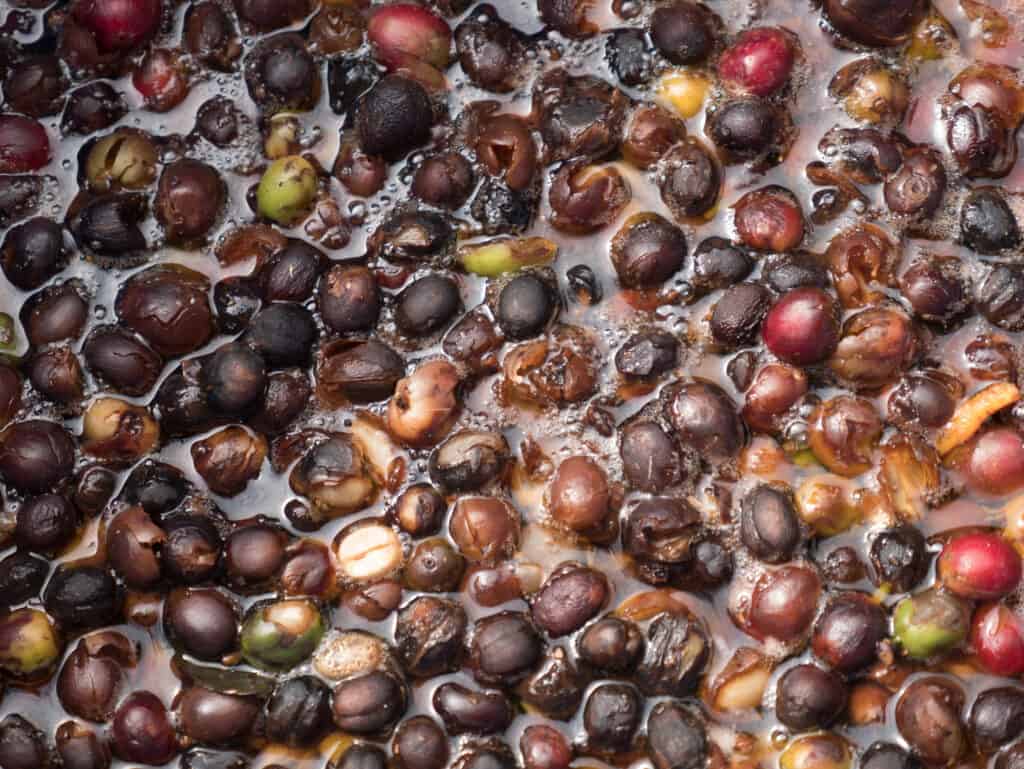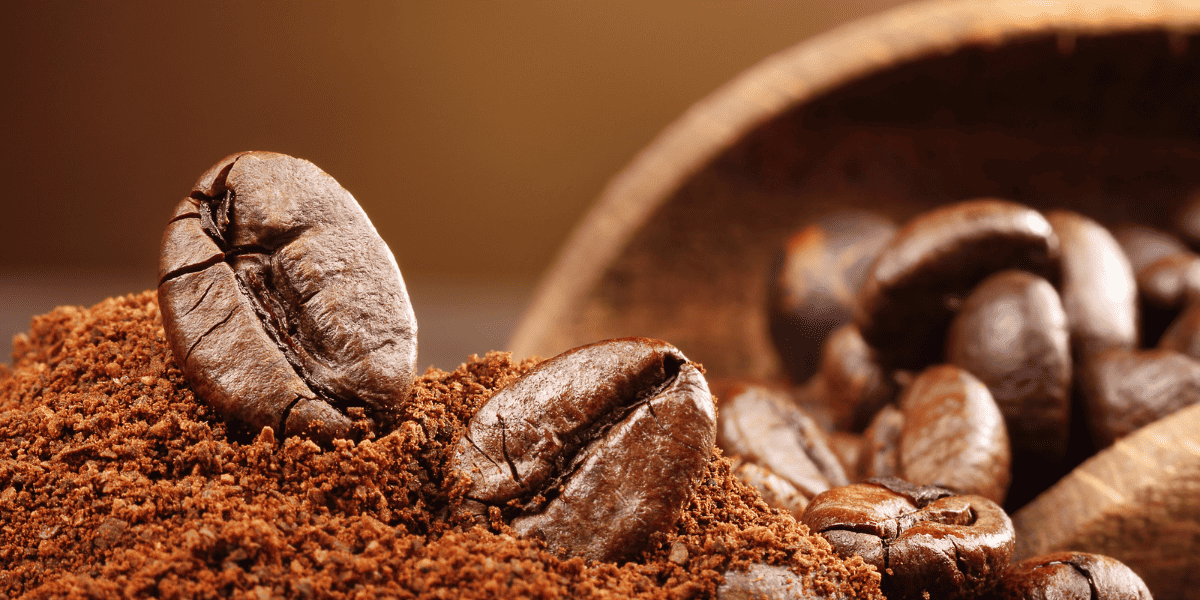“I like coffee because it gives me the illusion that I might be awake.”
~ Lewis Black, American stand-up comedian and actor
By Carter Trent
Coffee is an astonishingly popular beverage in the United States. According to the National Coffee Association, coffee consumption is at a twenty-year high, and the brew is more popular now than any other drink, including water.
With such a large amount of coffee consumption, wanting to know how the nation’s beverage of choice affects human health is an understandable desire. Many coffee drinkers are aware of its caffeine content, and that may be the draw for you too, as a means to give you that “push-off” in the morning.
Coffee contains over 1,500 chemical components, some of which contribute to beneficial health impacts, such as the presence of chlorogenic acids, which can help with regulating glucose (sugar) in the body.
What’s less commonly known is that your coffee may contain a number of contaminants, such as mercury, lead, and residue from pesticides. These toxic elements arise from the industrial methods used to farm and process coffee beans to meet the massive demand for that cup of java.
Toxic Substances: What Amount is “Safe?”
One example of toxicity is seen in the process used to create decaffeinated coffee. Different methods exist to extract caffeine from coffee beans, but the most common involves soaking the coffee beans in a solution of water and chemical solvents.
The chemical solvents used are either ethyl acetate or methylene chloride. Exposure to these chemicals can create health issues, particularly methylene chloride, which is categorized as a carcinogen to humans.
The U.S. Food and Drug Administration (FDA) has deemed these chemicals safe in decaffeinated coffee since the residual amounts that remain after processing are low, and the FDA has set a maximum allowable limit of no more than ten parts per million.
A chemical-free method to decaffeinate coffee, called the Swiss Water Process, uses only water, but it’s expensive and difficult to implement on a large scale, according to Professor William Ristenpart, Director of the UC Davis Coffee Center.
Another source of contaminants in coffee comes from mycotoxins. These are toxic substances produced by the growth of certain molds and fungi on foods such as grains, nuts, dried fruit, beans, wine, and yes, coffee.
Regular consumption of foods and beverages containing mycotoxins can make you sick, damaging your gut and the microorganisms living there, referred to as your gut microbiome.
It also increases your risk for cancer, kidney failure, immune system issues, and birth defects in your children according to the FDA.
Mycotoxins grow naturally on food during crop production and storage. Several factors promote mycotoxin growth, such as high temperatures and humidity introduced during harvest, in storage, and in the processing of coffee beans.
The health impact of these toxins depends on the type and level of mycotoxins your body is exposed to. For instance, a type of mycotoxin called aflatoxins (also found in peanuts) is so deadly that eating food with a large amount of it at one time can cause liver failure and death.
The FDA regularly tests for mycotoxins to ensure they are not at dangerous levels. But research has shown even prolonged exposure to trace amounts of aflatoxin B1 and ochratoxin A (OTA), two types of mycotoxins commonly present in coffee, increases the risk of hepatocellular carcinoma, a form of liver cancer that is the third leading cause of all cancer-related deaths.
OTA produces tumors in the liver and kidneys, causing an array of health issues, including kidney disease. The toxin is found in many foods, such as wheat, rice, apples, smoked fish, and even bottled water.
OTA is so common in our food supply that it’s nearly impossible to avoid. Studies have shown coffee contributes about 11% of OTA exposure in U.S. adults.
Because of its risk to human health, the European Union (EU) set limits on the maximum amount of OTA allowed in coffee, but no limit exists in the United States.

Pesticides and Herbicides Too
In addition to mycotoxins, coffee drinkers are exposed to other toxic substances due to how coffee is farmed. Starting in the 1990s, coffee farmers were encouraged to grow their crops under full sun instead of shade, the natural condition under which coffee plants evolved.
Many coffee farmers opted to eliminate shade because it allowed them to maximize production, and therefore, profits.
Yet exposing coffee plants to full sun promotes pests and the growth of weeds. As a result, farmers are forced into the widespread use of pesticides and herbicides on coffee crops.
Compounding the problem is the fact that coffee is produced primarily in developing countries such as Colombia, Ethiopia, and Indonesia. Pesticide use in these countries is often poorly regulated.
This happens due to a number of factors, such as a strong agricultural lobby in these countries, and a lack of personnel within the government to properly oversee and evaluate pesticide risks.
A Reuters investigation found that at least four major pesticide manufacturers, including U.S.-based FMC Corporation, sold pesticides in Brazil that were banned in their domestic markets.
Moreover, according to the World Health Organization (WHO), some cheaper yet more toxic pesticides, such as endosulfan, which is banned in the U.S., can still be used in developing countries, and can remain in the soil and water for years. These chemicals leave residue on coffee beans that end up in your morning cup.
According to the New Jersey Department of Health and Senior Services, endosulfan is on the Hazardous Substance List, and may cause the following symptoms: headache, blurred vision, vomiting, muscle weakness, convulsions, and coma.
Along with pesticide use, another issue with growing coffee in full sun is that it deprives coffee plants of nutrients taken from the fallen leaves of shade trees. To combat this, farmers use industrial fertilizers to artificially promote coffee bean growth.
The United Nations Environmental Programme has pointed out that these fertilizers are a source of toxins such as mercury, cadmium, arsenic, and lead.
Worse, a number of coffee farmers mix fertilizers with pesticides as a means of reducing costs and increasing efficiency. Combining these mixtures exposes coffee beans to increased levels of toxins since these chemical compounds were never intended to be combined, creating unpredictable and potentially dangerous results.
Roasting the Beans
Exposure to toxins doesn’t end at the coffee farms. Coffee can contain polycyclic aromatic hydrocarbons (PAHs). These are carcinogenic substances produced during the roasting process for coffee beans, and may also be due to contamination.
Roasting is a necessary stage in coffee production, as the key step to producing the aroma, color, and flavor in coffee. Research has revealed that the longer coffee is roasted, the higher the amount of PAHs, so dark roast coffees are particularly prone to elevated levels.
According to the Agency for Toxic Substances and Disease Registry:
“The carcinogenicity of certain PAHs is well established in laboratory animals. Researchers have reported increased incidences of skin, lung, bladder, liver, and stomach cancers, as well as injection-site sarcomas, in animals. Animal studies show that certain PAHs also can affect the hematopoietic and immune systems and can produce reproductive, neurologic, and developmental effects.”
Another toxin arising from coffee’s roasting process is acrylamide, a chemical compound produced when food is exposed to high temperatures. According to the National Cancer Institute, exposure to high levels of acrylamide can cause neurological damage, and increases the risk for cancer.
The FDA publishes data online showing the acrylamide levels in thousands of foods to help consumers make informed eating choices. The data shows acrylamide exists in coffee.
Instant coffee contains 100% more acrylamide than roasted coffee due to the way instant coffee is manufactured. In instant coffee production, the roasted coffee is exposed to hot water and high pressure, then concentrated through further heating before undergoing a process to dry the coffee.
This can add more heat depending on the drying process used. The repeated exposure to high temperatures increases the levels of acrylamide.
Switching to coffee substitutes made from chicory or different grains, including barley and rye, offers no escape from these toxins.
Research shows these grain coffees contain 300% more acrylamide than roasted coffee, since the amount of acrylamide concentration increases as the surface temperature on the grains rises during the roasting process.
They may also contain mycotoxins since OTA has been found in barley and rye, among other grains.
Although coffee is associated with health benefits, such as the reduction of inflammation, and you may relish your cup of Joe as the key to starting your morning with pizazz, the range of toxins present in coffee may make it hard to justify continuing your daily habit.
According to Cleveland Clinic:
“Phenolic compounds, or phenols, are substances found in plant foods that play a key role in your body’s defense systems, protecting it from oxidative stress, as well as inflammation.”

What You Can Do to Decrease Toxic Exposure
If the thought of giving up coffee is too painful to bear, options exist. Toxin levels are typically low in a single cup of coffee, and do not pose a significant risk of cancer according to California’s Office of Environmental Health Hazard Assessment.
The challenge is to avoid overindulging in the beverage to the point of increasing the risk of health issues over time.
How much coffee is too much differs for each person depending on your health. The FDA recommends no more than about “four cups of coffee per day” for a healthy adult because of concerns over caffeine’s impact on your well-being.
But that doesn’t account for the levels of the various toxins in coffee. So it’s best to keep coffee consumption even lower than the FDA’s recommendation as a good first step to decrease your toxin exposure.
Next, choose to buy coffee only from coffee companies that test regularly for mycotoxins. These brands cost more, but the trade-off is avoiding the contaminants. A search online for mycotoxin-free coffee will return brands that test for mycotoxins.
Another solution is to drink only organic coffee. Organic coffee is grown without the use of pesticides or herbicides. In addition, it pays to buy shade-grown coffee.
Coffee “under the trees” is grown with little to no chemical fertilizers, pesticides, and herbicides, since the natural environment of shade trees offers coffee plants the nutrients and protection needed without chemicals.
Shade-grown coffee is also better for the environment since it doesn’t require deforestation, and the lack of chemical use avoids toxins leaching into the soil and water sources.
Several coffee companies specialize in sourcing coffee from farms using shade-grown crops, and will highlight this fact in their packaging and marketing.
Another component to add to your coffee ritual is to consider looking for coffee designated fair trade. Coffee farmers struggle to make a reliable livelihood, with many living below the poverty line, despite the beverage’s popularity.
Fair trade coffee ensures the farmers are paid a minimum price, protecting them from a sudden fall in the price of coffee crops. This also incentivizes them to reduce reliance on fertilizers, pesticides, and other chemicals to protect their livelihood, as they are paid a higher price for growing coffee organically.
To limit exposure to PAHs, avoid dark roast coffee. To do the same with acrylamide, steer clear of instant coffee and coffee substitutes.
A 2020 study published in the European Journal of Preventive Cardiology found that due to the molecule, Cafestol, unfiltered coffee is associated with an increase in cholesterol and early death.
Unfiltered coffee, such as that brewed with a French press, contains diterpenes, compounds that can raise cholesterol levels, leading to increased risk of heart disease. Unfiltered coffee contains thirty times more diterpenes than filtered coffee.
Lastly, to avoid toxic dioxin exposure, be sure to brew your coffee with a natural brown filter rather than a bleached filter. If you’re making espresso at home, your permanent metal filter should do just fine.
Ultimately, the key if you’re a coffee lover is to limit consumption. As the ancient Greek poet Hesiod said, “Observe due measure; moderation is best in all things.” It might be wise to set a healthy boundary when it comes to your daily intake.
~
Published on March 30, 2023
If you’d like to contact A Voice For Choice Advocacy, please email media@avoiceforchoice.org.
If you would like to support the research and health education of AVFC editorial, consider making a donation today.

